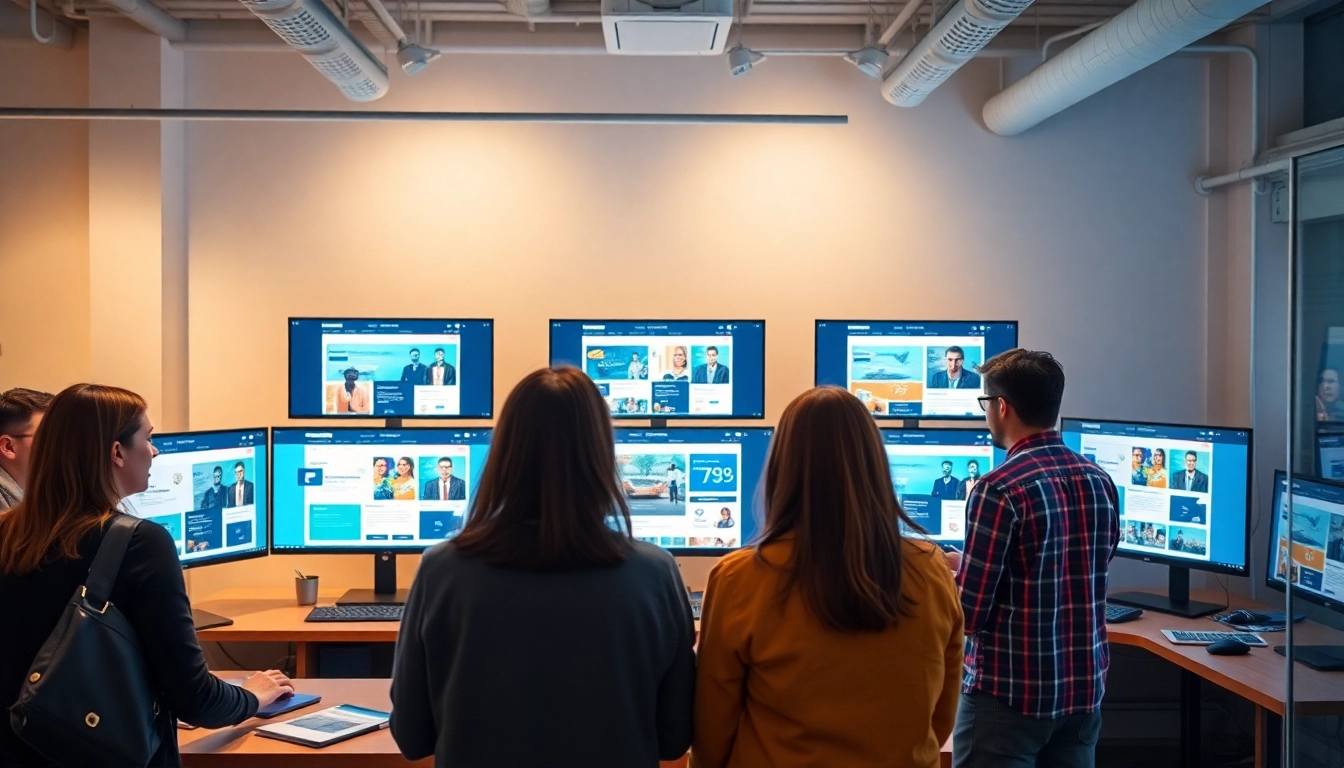Elevate Your Organization with Effective Business Membership Software Solutions

1. Understanding Business Membership Software
In the evolving landscape of business operations, effective management of memberships is pivotal for organizations aiming to retain members and drive engagement. Business membership software serves as a foundational tool in achieving these goals. This software typically enables organizations to manage various aspects of member relations, from registrations and payments to communications. Companies can effortlessly streamline their operations, ensuring that they can focus on what truly matters: creating value for their members. For those interested in a comprehensive solution, exploring Business Membership Software can provide significant insights.
A. What is Business Membership Software?
Business membership software is a specialized platform designed to assist organizations in managing their membership processes efficiently. This software encompasses a wide range of functionalities, including but not limited to:
- Member Management: Keeping track of member profiles, contact information, and engagement history.
- Payment Processing: Facilitating the collection of dues, fees, and other financial transactions associated with memberships.
- Event Management: Organizing and promoting events tailored for members, including registrations and follow-ups.
- Communication Tools: Sending newsletters, updates, and personalized communication to members.
By integrating all these capabilities into one platform, organizations can reduce manual work, increase efficiency, and provide a better experience for their members.
B. Key Features and Benefits
The benefits of adopting business membership software are extensive. Here are some of the key features and advantages:
- Centralized Data Management: All member information is stored in one location, making it easy to access and manage.
- Improved Member Engagement: Tools for communication and event management help keep members engaged and informed.
- Automation: Routine administrative tasks, such as renewals and billing, can be automated, reducing workload and errors.
- Analytics and Reporting: Organizations can track member engagement and financial performance through built-in analytics tools to make informed decisions.
Overall, the adoption of business membership software can significantly streamline operations, ensuring that organizations have more time and resources available for their core missions.
C. Who Can Benefit from Membership Software?
While many organizations can benefit from business membership software, it is particularly advantageous for:
- Nonprofits: Organizations that rely on memberships and donations.
- Associations: Professional or trade associations looking to manage member engagement.
- Clubs: Sports, hobby, or social clubs that need efficient membership management.
- Educational Institutions: Alumni associations or student organizations seeking to maintain relationships with members.
Any organization that operates on a membership model can leverage the functionalities of business membership software to drive member retention and growth.
2. How to Choose the Right Business Membership Software
Selecting the appropriate business membership software requires a thoughtful evaluation of your organization’s goals, budget, and operational needs. Here’s a comprehensive guide to help you make the right choice.
A. Evaluating Your Organization’s Needs
Before diving into software options, it’s crucial to understand what your organization specifically requires. Key considerations include:
- Member Count: Assess how many members you have and how this number may grow in the future.
- Essential Features: Identify which features are non-negotiable versus which are simply nice to have.
- Integrations: Determine if the software needs to integrate with other systems your organization uses, such as CRM or accounting software.
Conducting a thorough needs analysis will guide your search and eliminate options that do not align with your needs.
B. Comparing Features Across Platforms
With a clear understanding of your requirements, the next step involves comparing features among available platforms. Some critical features to examine include:
- User Interface: A clean and intuitive interface enhances user experience.
- Customer Support: Reliable support options are vital, especially during implementation.
- Customizability: Can the software be tailored to fit your specific needs and branding?
- Reporting and Analytics: Robust reporting tools help measure success and engagement.
Make a comparison chart to easily visualize what each option offers and how they align with your needs.
C. Pricing Structures and Budget Considerations
Pricing can significantly influence your decision. Here’s how to evaluate costs effectively:
- Subscription vs. One-Time Payment: Determine what payment model works best for your organization.
- Total Cost: Calculate the total costs, including setup, monthly fees, and transaction fees if applicable.
- Free Trials and Demos: Take advantage of free trials to test out software and assess usability and features.
Align your software choice with your budget while ensuring that you don’t compromise on critical features.
3. Integrating Business Membership Software into Your Organization
The successful integration of membership software into your organization can dictate overall effectiveness. Here’s how to ensure a smooth rollout.
A. Steps for Successful Implementation
To implement membership software successfully, follow these steps:
- Develop an Implementation Plan: Outline the goals, timeline, and resources needed for the software rollout.
- Involve Key Stakeholders: Engage team members from various departments for input and to ensure buy-in.
- Migration of Data: If transitioning from another system, ensure accurate data migration to avoid losing member information.
- Set Up Features: Customize the software settings according to your organization’s needs.
These preliminary steps can streamline integration and help alleviate potential issues.
B. Training and Onboarding Your Team
A well-trained team is vital for maximizing the benefits of your new software. Key actions include:
- Conduct Training Sessions: Organize comprehensive training for all team members on using the new system.
- Create Reference Materials: Develop guides or FAQs to assist employees in navigating the software.
- Address Concerns: Openly discuss any concerns or apprehensions to enhance comfort with the new system.
Focused training efforts will lead to a more confident team capable of leveraging the software’s capabilities.
C. Tips for Ensuring User Adoption
To guarantee that team members fully embrace the new system, consider these strategies:
- Highlight Benefits: Illuminate how the software will simplify tasks and enhance productivity.
- Encourage Feedback: Foster an environment where team members feel comfortable providing feedback on their experiences.
- Monitor Usage: Regularly check how frequently the software is being utilized and address any lapses in engagement promptly.
By emphasizing the positive aspects and maintaining open communication, user adoption will flourish.
4. Best Practices for Managing Memberships with Software
Once your business membership software is in place, it’s vital to harness its potential effectively. Here are some practices to consider.
A. Automating Renewals and Payments
Automation is a game-changer when it comes to managing renewals and payments. Implementing these practices can simplify processes:
- Automatic Billing: Set up recurring payment schedules for members, reducing the burden of manual processing.
- Renewal Notifications: Send out reminders well ahead of expiration dates to prompt renewals proactively.
- Flexible Payment Options: Provide multiple payment methods to cater to diverse preferences.
Automating these workflows can lead to increased retention rates and timely payment collections.
B. Engaging Members with Effective Communication
Consistent and meaningful communication plays a critical role in enhancing member engagement. Consider these methods:
- Segmented Communication: Use member data to tailor communications based on interests and behavior.
- Regular Updates: Keep members informed about events, news, and developments within the organization.
- Feedback Mechanisms: Implement surveys or feedback forms to gain insights into member satisfaction.
Engagement can build stronger relationships and increase member loyalty.
C. Tracking Performance Metrics and Outcomes
To refine your processes continually, tracking key performance metrics is essential. Important metrics include:
- Membership Growth: Measure how membership numbers evolve over time.
- Retention Rates: Analyze the percentage of members who renew their memberships annually.
- Engagement Levels: Assess how frequently members interact with the organization, such as event attendance.
- Financial Performance: Monitor revenue generated through memberships and associated activities.
These metrics enable organizations to gauge their success and identify areas for improvement.
5. Future Trends in Business Membership Software
Staying ahead of trends in business membership software is critical for long-term success. Below are key emerging trends that organizations should observe.
A. AI and Automation Enhancements
Future software solutions are increasingly integrating artificial intelligence (AI) and advanced automation. Anticipated advancements include:
- Predictive Analytics: AI can forecast member behavior and trends, enabling proactive strategies.
- Chatbots: Incorporating chatbots can enhance member support and improve communication efficiency.
- Personalization: AI-driven insights will allow organizations to tailor experiences better to their members’ preferences.
These enhancements will create streamlined operational processes and improve overall member experiences.
B. Data Privacy and Security Considerations
With the increasing amount of member data being collected, organizations must prioritize data privacy and security. Key considerations include:
- Compliance: Ensure adherence to data protection regulations like GDPR and CCPA.
- Data Encryption: Protect sensitive member information through robust encryption methods.
- Regular Audits: Conduct audits and vulnerability assessments to identify and mitigate potential breaches.
Emphasizing data protection will foster trust among members and safeguard the organization from legal challenges.
C. The Evolution of User Experience
As user expectations evolve, so must membership software solutions. Emphasis is being placed on:
- Mobile-Friendly Designs: Optimize software for mobile devices to ensure accessibility anywhere, anytime.
- Intuitive Interfaces: Prioritize user experience by creating simple and easy-to-navigate platforms.
- Customization Options: Allow organizations to create unique workflows and distinct interfaces tailored to their brand.
Focusing on user experience improvements will attract and retain members in an increasingly competitive environment.








